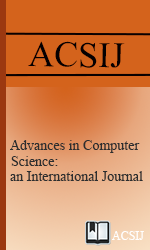Reverse Modeling and Autonomous Extrapolation of RF Threats
Abstract
This paper addresses the investigation of the basic components of reverse modeling and autonomous extrapolation of radio frequency (RF) threats in electronic warfare settings. To design and test our system, we first model RF threats using the radioactive parameters received. The enemy radar simulated with a transponder or emitter transmits electronic signals; next, the sensors of the system intercept those signals as radioactive parameters. We generate the attributes of RF threats during communication between the electronic emissions of RF threats and the receivers of our system in various electronic warfare scenarios. We then utilize the data acquired through our system to reversely model RF threats. Our system carries out the reverse extrapolation process for the purpose of identifying and classifying threats by using profiles compiled through a series of machine learning algorithms, i.e., naive Bayesian classifier, decision tree, and k-means clustering algorithms. This compilation technique, which is based upon the inductive threat model, could be used to analyze and predict what a real-time threat is. We summarize empirical results that demonstrate our system capabilities of reversely modeling and autonomously extrapolating RF threats in simulated electronic warfare settings.
Keywords
Full Text:
PDFReferences
D.J. Bryant, F.M.J. Lichacz, J.G. Hollands and J.V. Baranski, Modeling situation awareness in an organizational context: Military command and control, in A cognitive approach to situation awareness: theory and application, eds. S. Banbury and S. Tremblay, Burlington, VT: Ashgate Publishing Company, Chapter 6. 2004.
S. Noh and U. Jeong, “Intelligent Command and Control Agent in Electronic Warfare Settings”, International Journal of Intelligent Systems. Vol. 25, No. 6, 2010, pp. 514-528.
J. Patrick and N. James, A Task-Oriented Perspective of Situation Awareness, in A cognitive approach to situation awareness: theory and application, eds. S. Banbury and S. Tremblay, Burlington, VT: Ashgate Publishing Company, Chapter 4, 2004.
D.L. Adamy, EW 101: A First Course in Electronic Warfare, Artech House Publishers, Chapter 5. 2001, August 28, 2015 15:58 WSPC/ws-ijitdm ITDM20150828
A. Golden Jr., Radar Electronic Warfare, AIAA Education Series, Chapter 2, 1988.
B.R. Mahafza, Radar Systems Analysis and Design Using MATLAB, 3rd edition, CRC Press, Chapter 8, 2013
M. Patzold, Mobile Fading Channels, John Wiley and Sons, Chapter 7, 2002.
J.H. Van Vleck, “The absorption of microwaves by oxygen”, Physical Review, Vol. 71, p. 413, 1947.
J.H. Van Vleck, “The absorption of microwaves by uncondensed water vapor”, Physical Review, Vol. 71, p. 425, 1947
R. Hanson, J. Stutz and P. Cheeseman, Bayesian Classification Theory, Technical Report FIA-90-12-7-01, NASA Ames Research Center, AI Branch, 1991.
J.R. Quinlan, C4.5: Programs for Machine Learning, Morgan Kaufmann Publishers, 1993.
S.P. Lloyd, “Least squares quantization in PCM”, IEEE Transactions on Information Theory, Vol. 28, No. 2, 1982, pp. 129-137.
Q. Yang and X. Wu, “10 Challenging Problems in Data Mining Research”, International Journal of Information Technology and Decision Making, Vol. 5, No. 4, 2006, pp. 597-604.
L. Hamilton, Six Novel Machine Learning Applications, Forbes (2014), http://www.forbes.com/sites/85broads/2014/01/06/six-novel-machine-learning-applications/.
A.E. Spezio, “Electronic warfare systems”, IEEE Transactions on Microwave Theory and Techniques, Vol. 50, No. 3, 2002, pp. 633-644.
J. Heikell, Electronic warfare self-protection of battlefield helicopters: A holistic view, doctoral dissertation Helsinki University of Technology, 2005.
P. Clark and T. Niblett, “The CN2 Induction Algorithm,” Machine Learning Journal, Vol. 3, No. 4, 1989, pp. 261-283.
I.H. Witten, E. Frank and M.A. Hall, Data Mining: Practical machine learning tools and techniques, 3rd edition. Morgan Kaufmann Publishers, 2011.
 Advances in Computer Science : an International Journal
Advances in Computer Science : an International Journal







